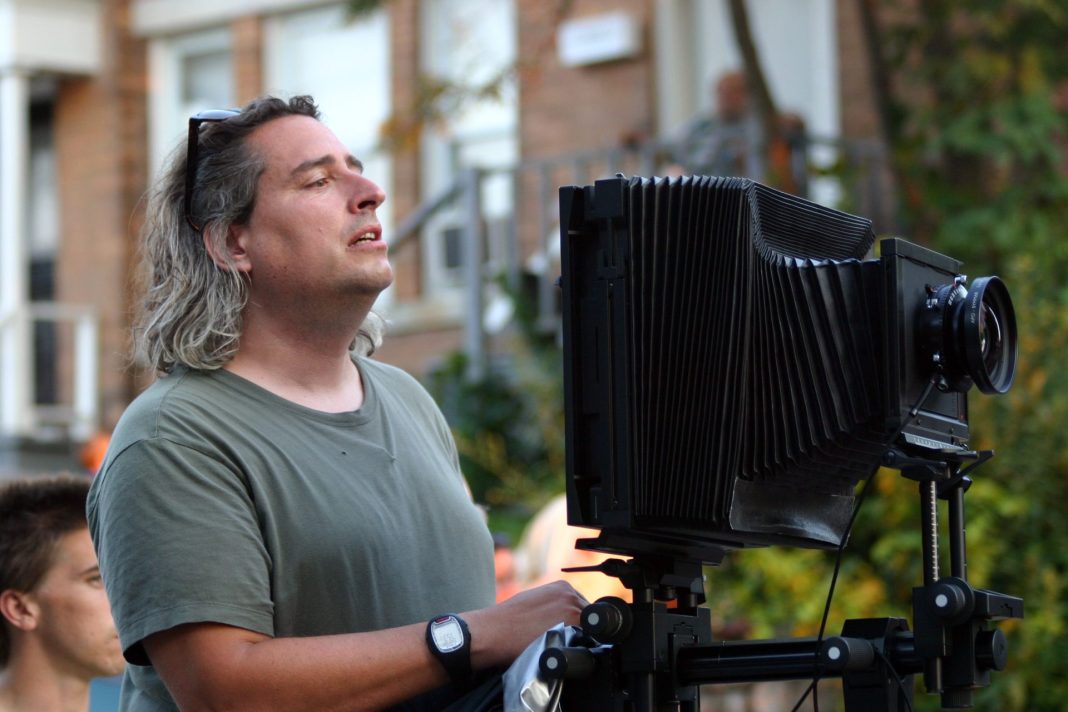For anyone embarking on their photography journey now, the world of image creation can seem very daunting. The market is oversaturated with photographers, all creating broadly similar and anonymous content. In such an environment, it is easy to feel a little overwhelmed if not helpless.
In such times, it can be helpful to look at some of the more unique photographers out there who have managed to gain public recognition through their singular vision. A prime example of this is the American photographer Gregory Crewdson. Born in 1962, he has a keen interest in creating scenes centred around small town America. The son of a clinical psychologist, his images combine a focus on the mundane with the uncanny, often unsettling narrative elements.
Crewdson, who obtained degrees in both photography and film history and in American literature uses photography as a means of telling self contained stories. The scenes that he captures are often very intimate and evocative, mirroring motion picture stills. In fact, his entire creative approach echoes that of big film productions. Working with crews of up to 100 people, Crewdson’s images are oftentimes taken on specially designed sets and highly choreographed.
The resulting images are highly detailed and require the viewer to spend time studying their composition, props and lighting, as well as the various characters depicted in them. What emerges can at times make the viewer slightly uncomfortable. The photographer’s work has not without reason been likened to that of director David Lynch.
Similar to the latter’s film Blue Velvet (1986), Crewdson has a keen interest in dissecting the American dream and depicting the seedy underbelly of small town America. Themes like alienation, death and decay all imbue his work with a slightly eerie tone that contrasts with the beauty of their lighting and scenery.
Ever since his series Twilight (1998-2002) Crewdson has been perfecting his craft, culminating in his three series Cathedral of Pines (2013-2014), An Eclipse of Moths (2018-2019) and Eveningside (2021-2022). Not unlike the painters of old, Crewdson is a slow worker, spending weeks if not months perfecting every single image. Most of his photographic series only span a little over 20 pictures.
However, for me, this is one of his greatest strengths rather than a weakness. Many people feel under pressure to produce and share work on a regular basis. This is particularly true for photographers operating in the fine arts space. The subsequent rushed style of photographic creation often leads to lackluster and derivative work. This is naturally not the case for every photographer. However, in a world in which people have to compete for attention and digital cameras have made it possible to take hundreds of images a day, overproduction is a real risk.
The lesson to be learned from Crewdson’s body of work is that one doesn’t need access to large scale production crews to create meaningful art. Nevertheless, carefully curating one’s pictures and spending more time on the conceptual phase might be beneficial to a lot of creatives.
Especially in the coming years, fine art photographers will have to compete increasingly with generative artificial intelligence on social media platforms and in gallery spaces. Yet AI is currently a blunt tool at best as it is not able to generate images as intentionally detailed or narratively significant as those of Crewdson. Because of this, I believe that photographers will have to move into a space not unlike the one now occupied by him in order to remain relevant.
The ability to create multi layered and stylistically coherent series of photographs will be what will be what sets photographers apart in the coming decades. Crewdson should be a model to anyone interested in following a similar path. His images draw the viewer in and make them pause. They can’t be glanced at but have to be taken in slowly, piece by piece. In a world in which everything, even image creation is becoming increasingly hectic, Crewdson’s approach provides a much needed slowdown of the pace.


